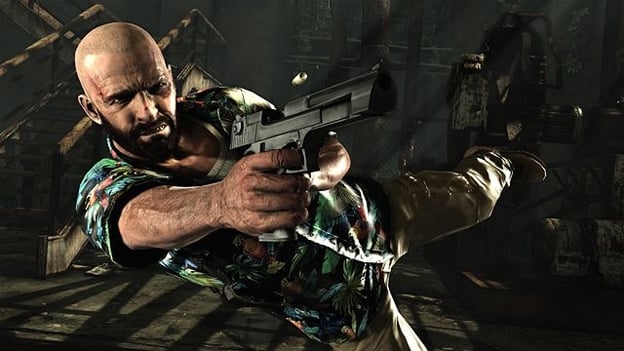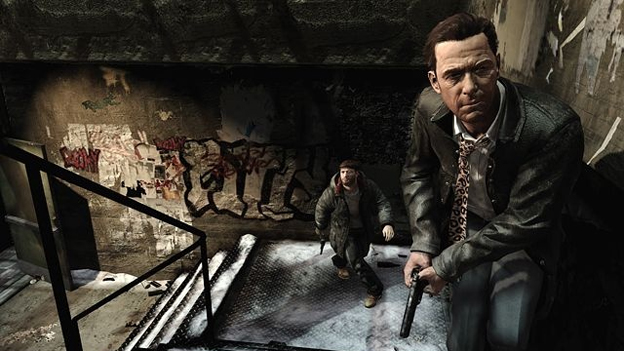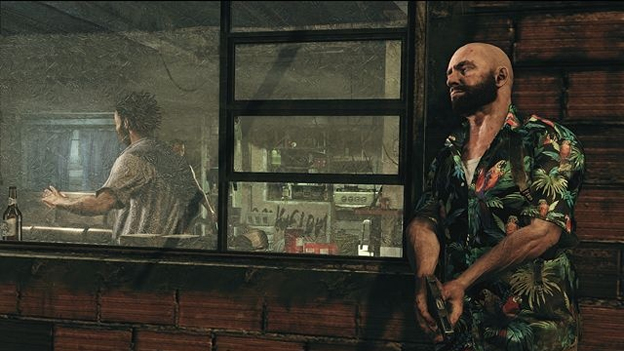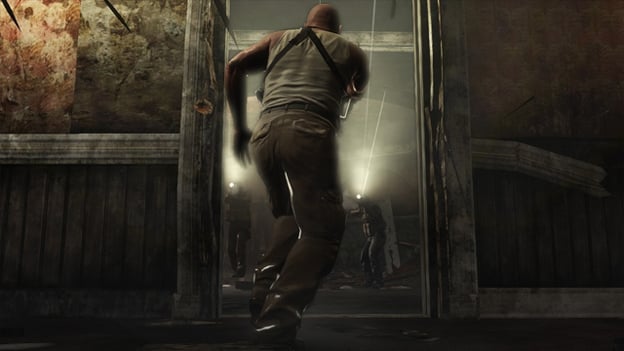
| System: PC, PS3*, Xbox 360 |  |
| Dev: Yager Development | |
| Pub: 2K Games | |
| Release: June 26, 2012 | |
| Players: 1-8 | |
| Screen Resolution: 480p-1080p | Blood and Gore, Intense Violence, Strong Language |
It's As Course As The Sand
by MDPGerman developer Yager did quite a surprising thing with Spec Ops: The Line: They gave us something different from the common shooter fodder we're used to.
by MDPGerman developer Yager did quite a surprising thing with Spec Ops: The Line: They gave us something different from the common shooter fodder we're used to.
Instead of a global threat with international conflicts or campaigns against terrorist organizations where you triumphantly emerge the world's hero, Spec Ops maintains a narrow focus and delves into the psyche to tug at your most morbid of emotions. Though loose with controls and nothing completely transforming in the gameplay department, the mental journey you are taken through with disturbingly realistic possibilities makes Spec Ops: The Line a shooter that you don't just put down and forget. The choices you make will gnaw at your heart, making it an impactful experience, a true sign that justice was done with the story.

The setting is Dubai, after cataclysmic sandstorms have engulfed the city. The sandstorms haven't ceased either, and will continue to impact your campaign through the sand dune city, sprawling beneath abandoned and teetering skyscrapers that jut out toward the heavens.
You play as Captain Martin Walker, leading a pair of squad mates: Sergeant Lugo, your scout and tactical officer, and Lieutenant Adams, who handles the heavier work. After receiving a distress call from Colonel John Konrad, commander of the 33rd Infantry charged with evacuating Dubai after the catastrophe, you lead your three-man Delta force through the storm wall for recon. After an unexpected attack from local insurgents, the plot very quickly becomes twisted, and those you were out to help will ultimately become the enemy. The 33rd has gone rogue, massacring civilians without cause. CIA operatives are opposing them, but you're unsure of their agenda as well. You soon realize that you're on your own, unable to trust anyone
The scene continuously becomes grimmer as you witness the graphic extent of violence against the former residents of Dubai and your countrymen. Though not his original intent, Walker finds himself in the middle of the conflict as he tries to be the hero. You are tasked with difficult choices that present themselves swiftly and offer you no direction as to which is the right one. The life and death decisions do not deliver any consequences instantly, but rather impact the outcome much further into the campaign. Thus reloading a checkpoint to choose the alternate route will not give any indication as to whether it was the right one. Also, you're given little time to converse with your conscience and try to intellectually reason out your decisions; they have to come from the gut. This makes Spec Ops as real as it gets for a warfare shooter. There's still some melodrama present in the script, but for the most part the game was not designed to replicate an epic Hollywood blockbuster, but rather make it extremely personal. And it's likely an experience you will keep private, as there's not a single choice worth gloating about.

Where Spec Ops: The Line returns to normalcy and the standard conventions is in its gameplay. The controls are almost exactly what you'd expect from any squad-based shooter: one trigger to aim, another to fire, another to throw grenades, a button to sprint, reload, swap weapons, melee attack, etc. If you've played any prior shooters you will instantly be able to fly into the action and pay little heed to the constant control tip pop-ins.
That said, the controls could be a lot tighter. There are many instances where you're forced to walk to compensate for conversations, and there are spots where you'll suddenly not be able to fire your weapon. But the most frustrating is the melee button being tied to the vault button. While playing a lighter difficulty level, this won't be much of an issue, but on harder modes, hurdling over a barrier instead of punching a shotgun-toting enemy could send you back to the previous checkpoint, forced to trudge through the combat again, when all you want is to see the next segment of the story unfold.

The generic enemies don't provide much excitement either (aside from the discomfort of being asked to shoot American soldiers). They all have expected designations, with a large percentage of rifle wielders, the occasional goon with a shotgun, some snipers at expected waypoints, and even a couple kamikaze skinheads with military knives. The A.I. is very aggressive, forcing you to handle swarms of troops quickly, which is a nice way to keep the pace moving. Unfortunately, they aren't very intelligent, and they'll chase you behind cover only to run circles around you, or have a rifle barrel pointed right at your forehead and instead use the butt end of the weapon. Pair their idiocy with them obviously being brainwashed to the point where not a single one shows any sign of remorse for their atrocities, and you won't feel all that distressed about performing execution blows on your fellow countrymen.
The character models seem to randomly switch back and forth between very detailed and pixelated messes. Even when the graphics engine is performing at peak, easily discernible mistakes—like eyes not sitting properly in their sockets—indicate areas where a little extra polish would have been appreciated. Animations are decent enough, but the enemies often run toward cover inexplicably, causing a drag in movement. On the other hand, the environments and backgrounds, as well as the still imagery of corpses and other disturbing scenes, will burn into your mind and may even cause you to shudder. Also, the impressive vistas, looking down on a desolate metropolis placed between mile-high mountains of sand, delivers a spectacle you probably haven't seen in any other game.
The incomparable Nolan North voices Captain Walker and does a masterful job with the script. However, with his instantly recognizable voice, I had a hard time not picturing Walker as Nathan Drake, though with more swearing and military jargon.
Spec Ops: The Line also comes packed with competitive online multiplayer, with a handful of different modes such as the free-for-all Chaos, Mutiny (team deathmatch), and Rally Point. Buried and Uplink are the two objective-based modes with a little more substance, requiring the destruction of Vital Points in order to reveal the High Value Target, or controlling a central rally point. However, since combat isn't exactly the highlight of the single-player campaign, multiplayer isn't really worth more than a few quick matches here and there. It does have a leveling system, leaderboards, and unlockables, but they've been done better elsewhere and don't present anything new.
Despite criticism in all other departments, the gritty story supersedes the game's mediocrity elsewhere, and finally delivers something outside the box. It dives into a disturbing realism that war, racism, and the psychological repercussions that could ensue, going far beyond the dramatic fluff that we've seen in other shooters. The gameplay is decent enough that you won't mind playing through Spec Ops: The Line at least a couple of times to see how different choices affect the conclusion, and the lasting emotional impact you'll likely take away makes this shooter worthy of being placed at the top of your pile.










